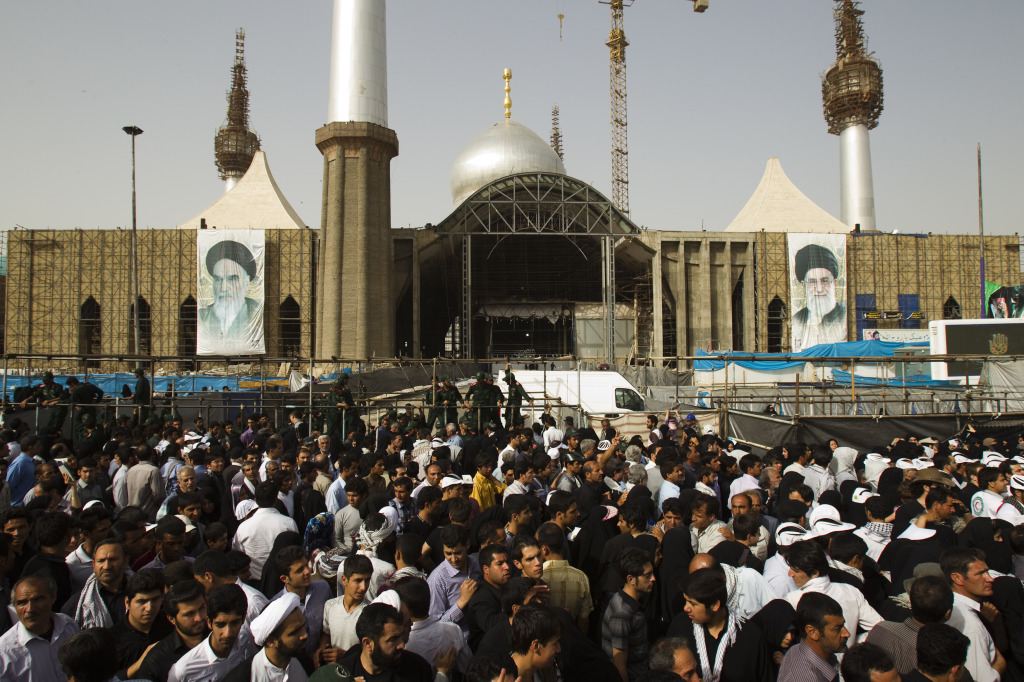By Dr. Rafael Medoff, founding director of The David S. Wyman Institute for Holocaust Studies.
The controversy over the New York Times-sponsored luxury excursion to Iran is a reminder that totalitarian regimes are always looking for ways to soften their image, and there always seems to be someone ready to oblige.
With veteran Times correspondent Elaine Sciolino as their guide, travelers who pay $6,995 each will spend 13 days visiting a very different Iran from the one we’ve all read so much about. Not the Iran of terror-sponsorship, nuclear arms development, Holocaust-denial and oppression of minorities–no, they’ll see “beautiful landscapes, arid mountains and rural villages, [and] vibrant bazaars,” according to the Times‘ promotional pitch. Sciolino and company will “get lost in ancient cities and learn about the traditions and cultures of Iran. Traveling in a small group and staying in luxurious hotels along the way, [their] journey through Iran will reveal the secrets from this once forbidden land.”
It’s All Been Done Before
Sadly, it’s all been done before.
In the 1920s, Soviet dictator Josef Stalin welcomed numerous American intellectuals and cultural celebrities. Among them was Isadora Duncan, one of the leading figures in American dance in the 1920s, who returned from Soviet Russia bursting with enthusiasm for the Communist cause. She soon began concluding her performances by waving a red scarf over her head, while shouting, “This is red! So am I! It is the color of life and vigor!”
During the 1930s, Nazi Germany welcomed visitors, especially from the American academic community. This sordid story has been chronicled in Prof. Stephen Norwood’s critically-acclaimed book, The Third Reich in the Ivory Tower. American University chancellor Joseph Gray, for example, returned from a visit to Nazi Germany “full of praise” for the Hitler regime. Gray reported to the American public in 1936 that German cities were “amazingly clean” and that “everybody was working in Germany.”
That same year, more than 20 U.S. universities sent delegates to take part in celebrations at the Nazi-controlled University of Heidelberg, scene of some of the earliest mass book-burnings. In fact, the chief book-burner, Nazi Propaganda Minister Josef Goebbels, presided over one of the receptions for the American delegates. Columbia University’s representative, Prof. Arthur Remy, reported that mingling with Goebbels and company was “very enjoyable.”
American Student Exchange in Nazi Germany
Prof. Norwood describes how American students, too, visited Nazi Germany, thanks to a program of student exchanges with German universities, in which Columbia, Harvard, Yale, Princeton and others took part. Even after a German official’s candidly asserted that his country’s students were being sent abroad to serve as “political soldiers of the Reich,” only Williams College terminated the exchanges.
During the Holocaust itself, Hitler used visits by foreigners to help camouflage the mass murder of the Jews. As part of this disinformation strategy, the Nazis in June 1944 invited a delegation from the International Red Cross to visit Theresienstadt, the Jewish ghetto that the Nazis had created in Czechoslovakia. Theresienstadt was a transit point for Jews being shipped to the gas chambers in Auschwitz, but the Nazis sought to present the camp as a final destination, where Jewish prisoners lived happily.
Jewish Inmates Worked to ‘Pretty Up the Site’
In the days before the Red Cross visit, the Nazis worked the Jewish inmates at breakneck speed to pretty up the site. Houses were freshly painted–but only those portions that would be visible to the Red Cross inspectors as they walked down the street on the preselected route. Schools, stores, a bank and a cafe were quickly built, to give the appearance of a normal village. Deportations to Auschwitz were increased so as to temporarily relieve overcrowding in the camp. With Theresienstadt’s flower beds neatly trimmed and its orchestra well rehearsed, the Red Cross delegates saw only what the Nazis wanted them to see.
The visitors’ subsequent reports to Red Cross headquarters were critical of some aspects of Theresienstadt, but also described conditions there as “relatively good.” They agreed with the Germans’ contention that it was a final-destination camp–even though the Red Cross knew that the population of Theresienstadt at the time of the visit was 30,000 less than it had been shortly before. From the Germans’ point of view, the visit was quite a success.
In different forms, this phenomenon has continued in recent decades. From Jane Fonda visiting Hanoi, to Jack Nicholson meeting Fidel Castro (and praising him as “a genius”) to ex-basketball star Dennis Rodman traveling to North Korea last year, more than a few Americans have enjoyed the charms of a carefully-choreographed visit and then returned to share with the U.S. public a whitewashed picture of life under a dictator’s heel.
This article first appeared on Israel National News (Arutz-7).
